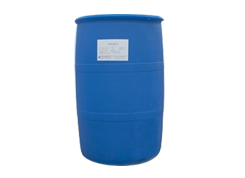The selection of suitable surface modifier plays a decisive role in the preparation of nano ZnO. The application purpose and requirements of the treated object, particle size, particle size distribution, particle morphology, surface polarity and treatment process must be considered before use.

In the process of synthesis, surfactants can act as the "soft template" of the reaction to help the crystal directional growth. Through chemical adsorption and specific crystal surface selectivity, the shape of the particles is more diversified, showing a variety of different morphology. Flower like ZnO was prepared at 200 ℃ with polyethylene glycol 220000 (peg220000) as surfactant under hydrothermal conditions, and columnar and rod-shaped ZnO could be prepared by changing surfactant to CTAB (cetyltrimethylammonium bromide) at a certain temperature. Sodium dodecyl benzene sulfonate (SDBS), sodium dodecyl sulfate (SDS) and sodium dodecyl carboxylate are often used as surfactants to prepare ZnO nanomaterials with different morphologies.
The effects of PEG-400, unsaturated fatty acid tween-60 and PAAS on the size and surface morphology of ZnO nanoparticles were studied. The results showed that the steric hindrance effect of PEG decreased the surface tension of ZnO nanoparticles, reduced the bonding between particles, and had a good effect on reducing the particle size of nanoparticles, and prevented it to a certain extent The effect of agglomeration can effectively reduce the particle size. However, the use of unsaturated fatty acid tween-60 and low polyacrylate sodium PAAS can occupy the micropores on the surface of the powder, resulting in the decrease of the specific surface area of the powder, resulting in a good dispersion of nano zinc oxide.
By comparing the effects of ionic (sodium dodecyl sulfate, cetyltrimethylamine bromide) and non-ionic (Tween-80, polyethylene glycol-6000) surface modifiers on the size and morphology of zinc oxide particles, it is shown that sodium dodecyl sulfate has good dispersion of precursor, and the particle size of nanometer zinc oxide is also small (about 80nm); polyethylene glycol-6000 can be effectively wrapped in nano particles The results show that the surface of ZnO particles can prevent the particles from converging to form the second agglomeration, and the nano ZnO particles are about 95nm; cetyltrimethylamine bromide is a cationic modifier and has the same charge with the precursor of nano ZnO. Due to the mutual repulsion, the active agent can not effectively wrap on the surface of the precursor particles, which makes the particles easy to agglomerate The size of ZnO nanoparticles is about 203nm.
The effects of different surfactants on the size of ZnO particles prepared by chemical precipitation were investigated. The results show that the ZnO synthesized by anionic surfactant emulsification has small particle size, uniform structure, good dispersion and high gas sensitivity at low temperature. Liao Liling et al. Synthesized zinc oxalate precursor by direct precipitation method with zinc nitrate and oxalic acid as raw materials, adding different kinds of surfactants, and then thermal decomposition to obtain nano zinc oxide powder. The addition of 2% surfactants can effectively reduce the particle size of ZnO nanoparticles. Among them, the effect of polyethylene glycol-400 is significant.